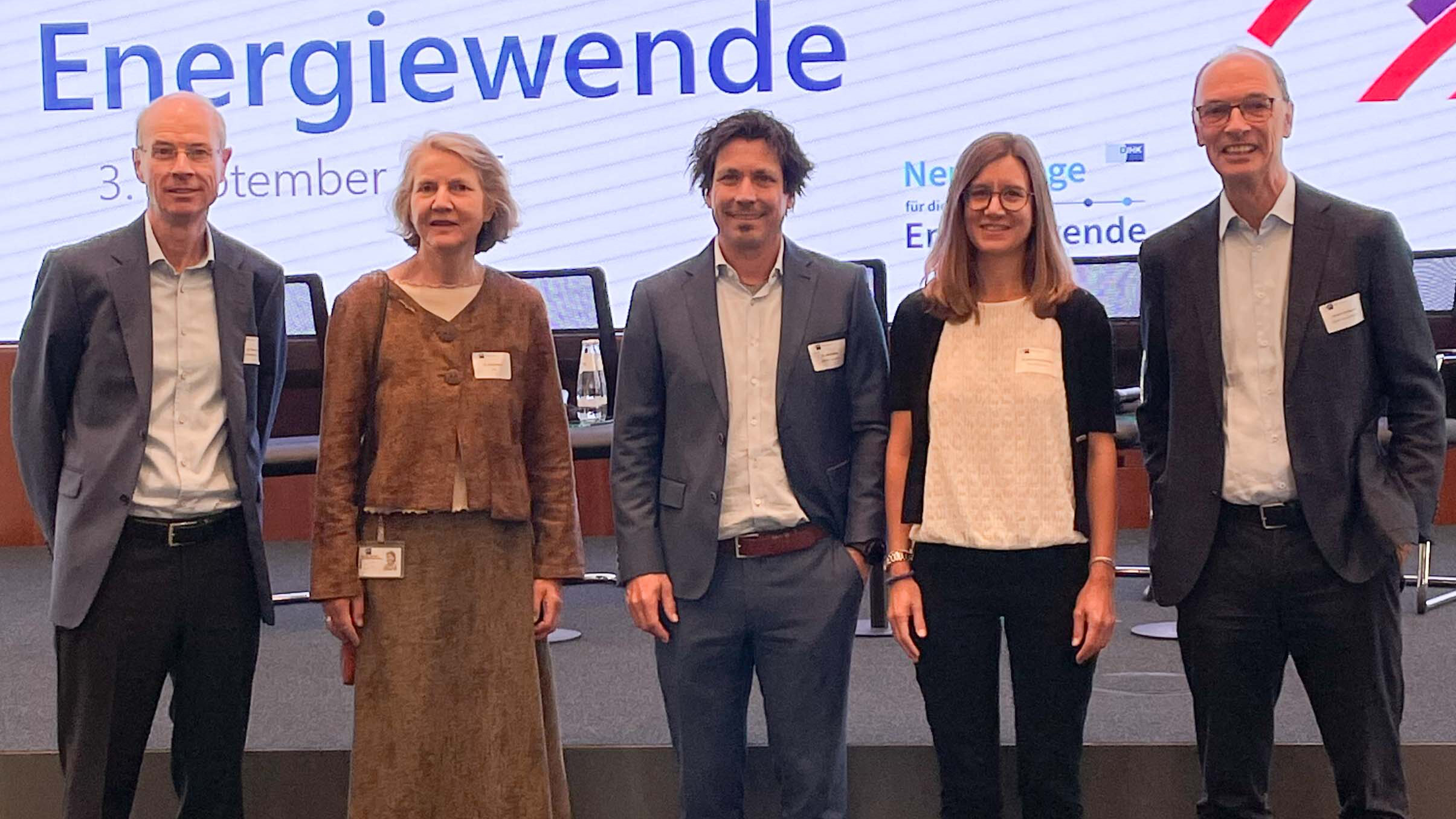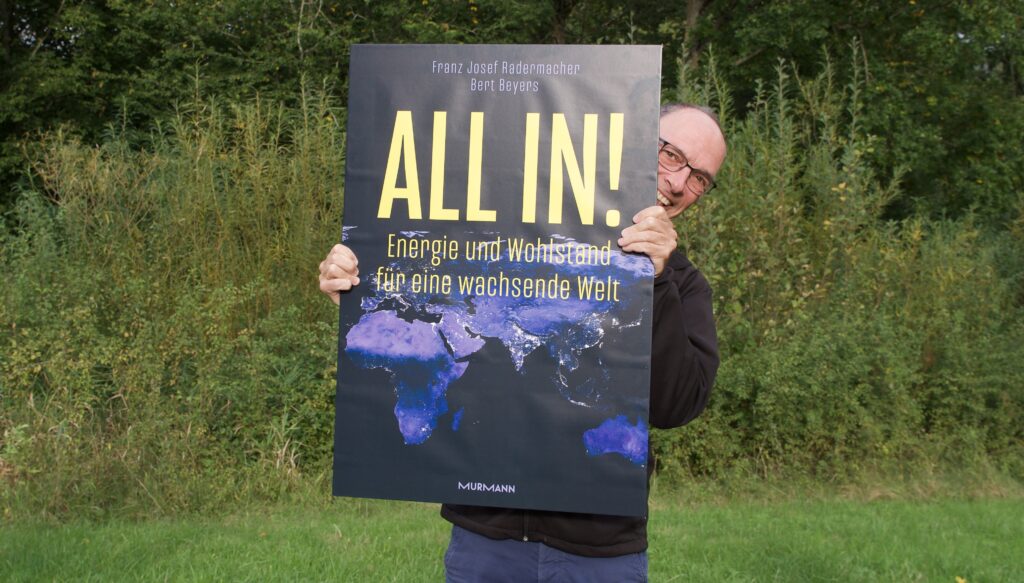At this point, some news of the last few weeks will be addressed which, from GES’ point of view, are reason for hope because they contain building blocks of a possible global solution and / or could help to develop a realistic view of the challenges ahead of us.
There is a veritable boom in solar installations in Germany. According to the German Institute for Economic Research (DIW), 91 gigawatts are currently installed in Germany, with 88 gigawatts planned for 2024. Electricity grid operators face problems due to overproduction, especially around midday. The study criticises the fact that the feed-in tariff and household electricity tariffs always remain the same. As a result, there is no incentive to expand storage.
The massive expansion of solar energy is driving subsidies under the Renewable Energy Sources Act (EEG) to ever new heights. This year, it is set to reach around 23 billion euros. GES is of the opinion that the expansion of volatile renewables only makes sense up to around 50 per cent. See the GES study.
EON CEO Leo Birnbaum takes a critical view of the solar boom in Germany. The effects of the solar boom on the economy as a whole are negative: “This is because these systems push uncontrolled electricity into the grid at midday, when there is a lot of sunshine, and thus increase the oversupply at this time of day.” The operators of these solar plants are legally required to pay a fixed purchase price for the electricity. Birnbaum: “To put it bluntly: the low-income earner in the rented flat pays for the solar system on the higher-income earner’s detached house.”
Due to the high cost of energy, four out of ten industrial companies in Germany are considering cutting back production or relocating abroad. According to the German Chamber of Industry and Commerce (DIHK), this trend is even higher in energy-intensive industries.
The import barriers in the EU for e-fuels must disappear! This is the demand of Thorsten Herdan, CEO of HIF EMEA. “Only the projects that reach the final investment decision in the next 12 to 18 months will supply green hydrogen and e-fuels to Europe by 2030.” Herdan sees the reason for the pending final investment decisions in the strict and unclear European rules for green hydrogen and e-fuels. GES adds: “These consist, for example, of the fact that proof must be provided that the electricity used was generated in addition to existing renewable capacities. Furthermore, production must be synchronised with the availability of renewable electricity.
The German Association of the Automotive Industry is calling on German politicians to ban fossil-based fuels from being sold at German petrol stations from 2045. From this date, the petroleum industry should only offer climate-friendly fuels. To achieve this, the ramp-up of climate-friendly fuels would now have to be supported in order to facilitate investment.
The ADAC has tested the largely climate-neutral fuel HVO100. The conclusion: “It’s good that HVO is finally available at petrol stations in Germany. If the approval for a model is available, the fuel can be refuelled without hesitation.” See the position paper from GES and eFuelsnow.
According to the International Energy Agency (IEA), never before has so much coal been produced as in the past year. Demand rose by 2.6 per cent and reached a new high of 8.7 billion tonnes. China alone consumes more than half of the coal used worldwide – despite major investments in renewables.
China is building eleven new nuclear reactors, investing the equivalent of almost 28 billion euros. This means that China is building more nuclear reactors than any other country. China could become the world’s leading producer of nuclear power as early as 2030.
Where would we be today if Germany had also invested in nuclear energy over the past 20 years? A new scientific study addresses this question. It comes to the conclusion that CO2 savings would have been 73 per cent higher compared to the current path of the energy transition, which relies primarily on volatile renewables.
When will Germany get a nuclear waste repository? According to a report by the Ökoinstitut for the Federal Office for the Safety of Nuclear Waste Management (BASE), this is not expected until 2074 at the earliest. The Federal Environment Ministry takes a different view and assumes that a final repository for highly radioactive waste can be found by the middle of the century. There are currently 27,000 cubic metres of highly radioactive waste in 1,750 Castor casks in interim storage facilities in Germany.
In a guest article for Tagesspiegel Background, Ralf Fücks and Lukas Daubner from the Centre for Liberal Modernity argue for the increased use of carbon capture in Germany. The guidelines for a carbon management strategy published by the German government in the spring are a step in the right direction. However, the various methods and potentials have not yet been recognised.
Cement manufacturer Cemex in Brandenburg is to become climate-neutral as quickly as possible with the help of carbon capture. According to Brandenburg’s Minister President Dietmar Woidke, the CO2 could be stored geologically in Poland. However, a CO2 transport network is still lacking. Meanwhile, various companies and the Wuppertal Institute have submitted proposals for financing the German CO2 transport infrastructure.
The energy company Uniper is testing a hydrogen storage facility in a former salt dome in the East Frisian municipality of Krummhörn. During the two-year test phase, Uniper wants to check how stable the system is, especially the pipes, pumps and valves. The storage facility is located at a depth of around 1,700 metres. A connection to the German hydrogen pipeline core network is possible.
Two years ago, the USA launched the Inflation Reduction Act. Figures from the Clean Investment Monitor now show the success of the programme: In the second quarter of 2024, investments totalling 73 billion US dollars were made in the USA, an increase of 27 per cent compared to the same period last year. In total, almost USD 500 billion has been invested over the past two years – significantly more than expected.




